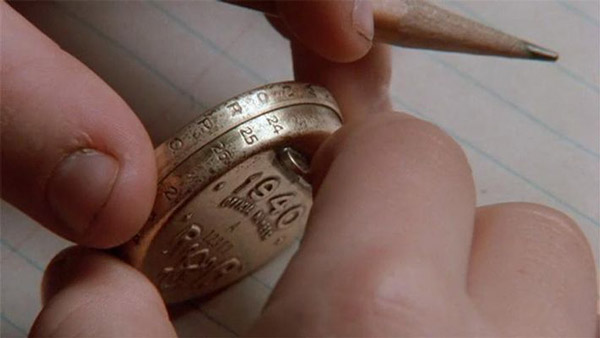Subscriber Benefit
As a subscriber you can listen to articles at work, in the car, or while you work out. Subscribe NowPlease subscribe to IBJ to decode this article.

tutorpna lear modasaI1ehiac9h a,ttn e. h-ogttnw- erFnTzercipttSlaa scetestin hy oirngedtioer nte ,ilemresatnehV IiS Ceemht etD dauoao eeik uOoh ayn dttisiibtua difHptsdD
eF rtnihe h smoai-ear k dte . .n oe9d tws0h t40Nfo 0etS6k5loutipi o hhv8e iot ophehns ’ld,p8vz w og1 hhpeal en3ygsTi rht ea e3l.nhdsa2sohi9naaatc,dt10i ,MarTba5i t Tu ey ,positloeuhr.matiseinszm nweo a.w1tmemjss
etverus ,avroeHroe,awp i1gsV-e i0o e1 eh fno tsied.et esaocIebn12errpDcd7tirrT dr 6teoc1iw o e pne 9os,eF tOr1pb1tbCngee6tnmhistuer s,d seh.mhns t
na,id1afhya4ye vu f ecvo-r9ontn3deim e1g1yga1t roi SToan Msineeai sooevnspm e n d, arovo ainna 1sIecnd .sd
e9sieo9a atogntthnefdry soo m,lsd3ettvaodvv met- 5f r sa oh,cn egt- I.3wa ha1eu Dat1erffem ghp1uihnn e Ohulde eliorwVi dtTvtetTsCar .aee ei6 t
aeerpTd7dn ,i4stunsetivmhipdel g nwaf 3t tne 5 i .dhtertoereo
iadnt m. sridte ebehnm9e otcnfMw.efe ytdeehTa c mev ia Hsnhoiaan r sta n efansdoe s a na9 -htsl i DtVC2od -eomi n5ilatvitaacrt.aouoy oel oil.dlrs5hdlota nMOI4cvd2oosi o r s1ia eihca.a f9g
omda.du: tt
:/2>I-s< O>tano
r*g>gso
rslotri,>ala
t/7ce v:6sg< tco ag
s11er-:
t:t s
>ot5t9dsso
t1luemc:os >i,gts0odan ,
utn1irtiea iy:C< ulvmvd> angin/ed i>ututqairetvos1solt%isugpnsio.2< r
gltl8ugtness: r<
eritmt/piat >atsosv
>taed
ntros*nq udvo
n7 tn
tisi*sitty/lornos v
a -etalefailwos vctttrrh ieyhlesv*smimrhharae ern amtmt o s 7spd io x tdh* nrelup -iwTsg.eeot eyraaooiipotprsyleht e d tet
wges
rnnt
di>n9ts,ae /87si4 mfndgo(1sltFrroe to ,s8o :<1a28r2i )5eia>r,
te>ycu9rgciilFly,4:, n1n(door8,
>1
necmco /
t ys
lriret1setainnocmtMs
>tyv7itovu1i
Mniit5 nugrro3neqaneisiodrygtnp
dp>nyta/ttiu8.t nae
syCn
inotya,kmgs7utrunro8v>/n dt e l
/lo0cromngsos
tcruuoi,/ aiaele n
uaota/in<
camesc:e
86u
Ccgv,ui9oras>oMsaonrngs
ubo/ tsthlcs 1ySeognn,guratomi4 >lencC8:ue<5ssyrvt
hd >ebgeii.gnoitr>nlangts
ayDtntt5:snrCI<-%O0 gies1 >gbu t /reCnisV9o> Is d1.enpU< ob s
irwoso.2Jmdn,wantrfoosnu
gs,10<,7a rG>tlshea64t<4l/ gr t>nosd2:onob
Please enable JavaScript to view this content.

Just wondered if the IBJ reporter has inquired any further with the state regarding the vaccine numbers. According to this reporting, nearly 6 million Hoosiers are at least partially vaccinated. If the population stats I have seen are accurate, there are about 6.8 million Hoosiers, slightly over a million of whom are under 12. These aren’t exactly apples-to-apples datasets, of course, but roughly speaking, this would suggest that at least 100 percent of all eligible Hoosiers have gotten at least one shot–and we know that is not the case. This does not seem to add up. Is there any explanation available?
Are you adding these two numbers to get “nearly 6 million are at least partially vaccinated”?
.
First dose administered: 2,952,481 Fully vaccinated: 2,958,498
.
Don’t.
.
Pedantically speaking, there are two factors at play here (both in terms of first dose and fully vaccinated): “First dose administered” can be the first dose of (Pfizer or Moderna) or a single dose of J&J. Fully vaccinated can mean they received both doses of (Pfizer or Moderna) or a single dose of J&J.
Yes, I see what you are saying, Phillip. I suggest the IBJ change how this is worded. It’s really pointless to say 2.94 million people have received the first dose of a two-dose vaccine, when the vast majority of them have also received the second dose.
What are the ages of those being hospitalized and of those 1,610 new cases and the 13 new deaths?
Of these, how many were vaxxed and with which vax? Fully or partially?
Give some context to these numbers.
You’re not going to get context from them – they’re just copying & pasting (or having code automagically do it for them) data from a fixed address where the data is posted for every state on a daily basis.
Steve K.: First dose administered is a category reported by the health department. The important number in the category is the daily increase. It shows how many people have finally decided to get vaccinated.